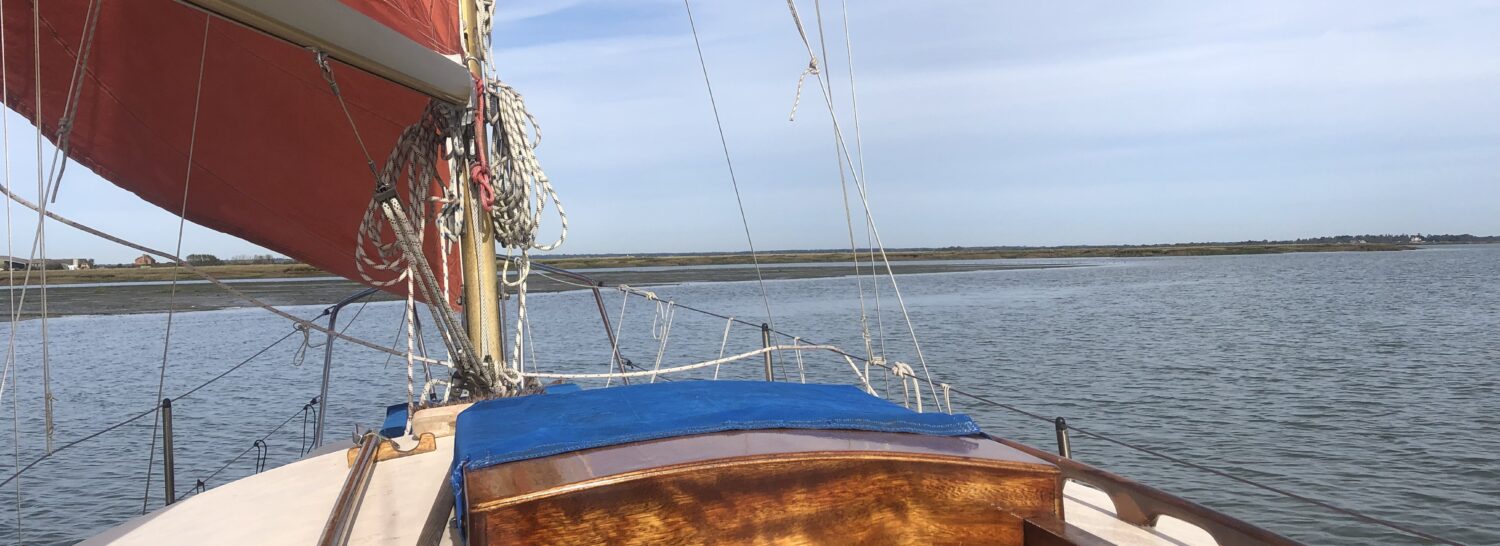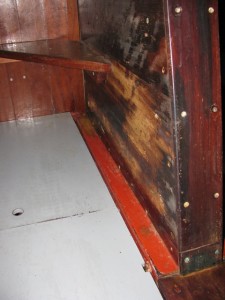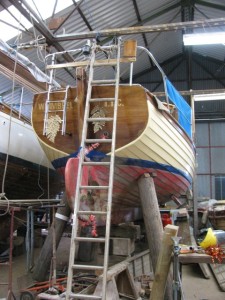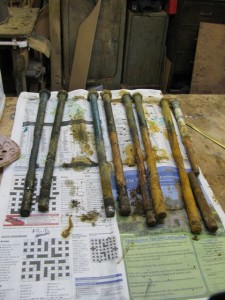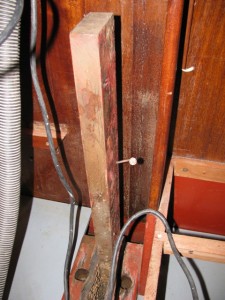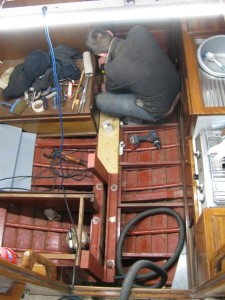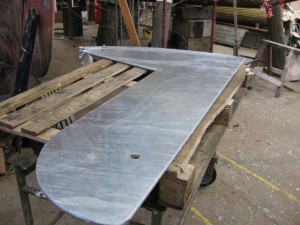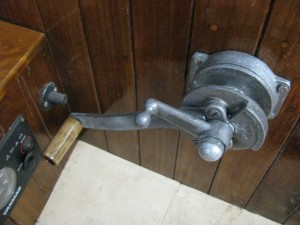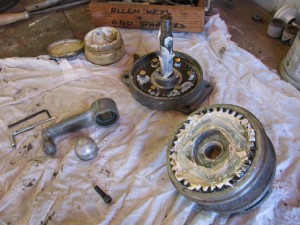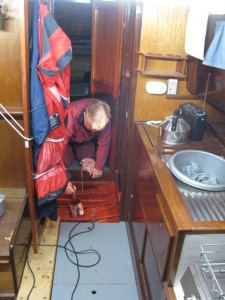Keel bolts whether there to hold a boat’s structure together, as with a traditionally constructed vessel, or in the fashion that most now think about as for many modern yachts are an area of our craft that must always sit in the foregraound of our thoughts: at some point they need to be inspected.
Keel bolts are a subject of investigation in the marine world at present, especially after a much publicised event out in the N. Atlantic last year. That event, the loss of the Kiki Rifiki and her crew, set wheels in motion at ISAF. They instituted a study into why this is happening. So far a database of 72 cases of keel failure has been built up. Unfortuately this sadly includes the loss of 24 lives at sea.
So many modern yachts have deep ballast keels slung from the underside of what is essentially a skimming dish – far removed from the traditional world. How often is thought given to these bits of metal holding the ballast keel to the GRP hull?
In traditional craft, owners tend to operate on the principle of ‘best practice’ based on time worn principles…
I was told by Whimbrel’s builder that I’d not need to worry about these bolts for around thirty years! I actually started a programme some fifteen years ago when boat was around fifteen years old. The engine was out, so I took the opportunity of doing the two aft most bolts holding the ballast into the keel structure – bolts are bolts, and ill supported ballast could cause a problem!
At a later date, I did a further bolt towards the forward end. The two aft bolts were pretty good, however, the nuts had been wasted and corrosion had seeped downwards with bilge water! The forward bolt was in a good condition… It was renewed all the same. I ‘set’ the bolts in roofing paint – liquid bitumen. There is probably liquid in the crevices still!
This last summer I noticed weeping from two of the wooden capping plugs on bolts around my centre plate casing – it was time to investigate.
Note: weeping from capping in ‘top’ of picture by aft end of floor board.
Unfortunately, on one side of the casing the side structure sat over the cappings … thus the side needed to be removed. Do one side – do both.
During a summer stop-over in lovely Faversham, I spoke to Alan Staley who has his yard in the creek just above the Iron Wharf. Yes he could do the work. The boat went into his shed at the end of November 2014…
Up on the stocks in Alan’s shed … Alan dresses all ‘his’ boats for Christmas!
Along the centre plate slot of a Finesse 24 there are four sets of 5/8″ galv bolts, in between these there are three sets of what are termed ‘centre line’ bolts which are there purely to sandwich the wooden parts of the keel structure, as do those forward and aft of the ballast, through the deadwoods etc…
The four sets of 5/8″ bolts. Fwd set are to lhs.
There now follows a series of photographs with explanatory notes, of interest not only to Finesse owners, but many others too, I’m sure…
The removed casing from port side of box – after 32 years the paint coating remains intact under a thin coating of mud.
The diagonal scoring across the inside face is a mark left by the top of the centre plate – actually the lifting wire lugs, see picture of centre plate below. These were no more than a milimetre or two deep … my plate is up and down when sailing … like a…
Note the box was not conventionally glued but had a ‘painted’ seal – it is going back the same way, Alan has firmly stated … I agree. It never leaked before and won’t after…! Note too the rabbit at bottom of casing, this can be seen below too.
Looking down at the two posts. Middle of three holes on (port) side is one of the ‘centre line’ bolts – not disturbed…
Close up of aft post – there was no indication of any rotting to any of the structural parts, which is entirely constructed of iroko.
Many owners of earlier Finesse 24s have found bad news in this area, however, earlier boats were of mahogany construction. By the mid 1970s Alan Platt (the builder) had changed to iroko for all his boats.
Looking down on the box structure which has been cleaned and preserved.
Bolts are back in and plugs fitted. The bolts were coated with tar varnish and inserted wet, heads set on grommets. In the above picture the shipwright can be seen securing the seal plate over forward end of slot. The seal plate over this area is technically an outside plank and is sealed down. Note transverse fastening bolts – these sandwich the three parts of structure including posts. See also first picture where a bolt can be seen to edge of floor board. Bilges yet to be painted…
New centre plate awaiting to go in…
Whimbrel also now has a ‘new’ winch which the owner of her sister Josie (No.63) gave her. The old one had a loose spigot shaft – originally shrunk into base housing, this may not be repairable, cost effectively.
The winch, cleaned, greased and ready for assembly … a little job at home over Christmas…
The casing is currently being put back together. We have made a start on bilge painting, having completed the forward end and under the galley… The boat is due to go back into the water into the water by end of January…
My good mate hard at it whilst I take pictures (actually having just fitted winch) finishing the area in loo compartment and under locker … boards down for ease of movement!
See also: http://nickardley.com/wimbrels-keel-bolts-near-complete/
